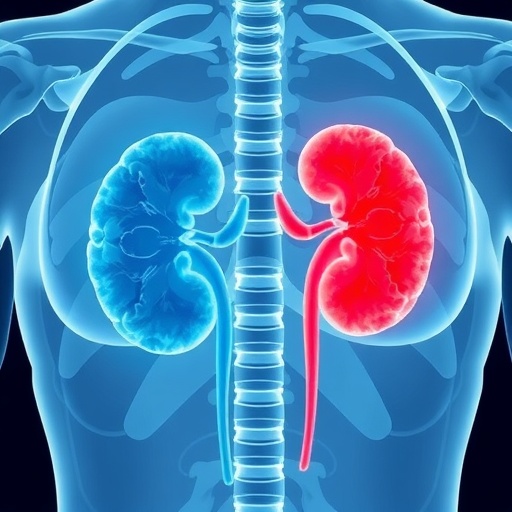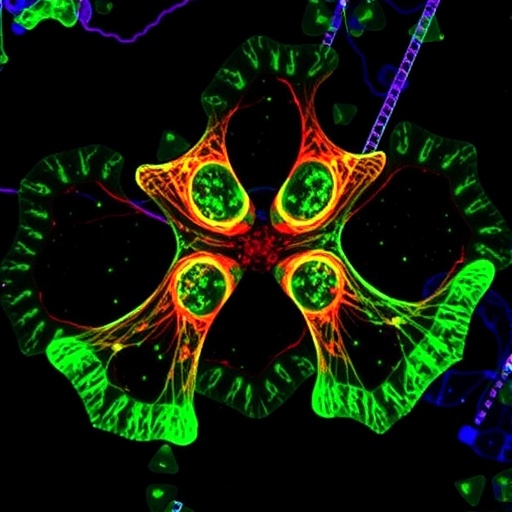Chronic kidney disease (CKD) represents a progressive and intricate medical condition characterized by the gradual deterioration of renal function over time. This decline, if left unchecked, ultimately culminates in end-stage renal disease (ESRD), a critical state wherein kidney function falls below 10% to 15% of normal capacity. At this juncture, patients necessitate renal replacement therapies such as dialysis or transplantation to survive. Globally, the prevalence of CKD spans a significant range, affecting approximately 8% to 16% of the population, with 5% to 10% of these individuals eventually advancing to ESRD. This progression places CKD among the leading public health challenges worldwide, combining severe patient morbidity with considerable economic burden.
Recent advances driven by the convergence of clinical medicine and artificial intelligence have opened new frontiers in predicting the trajectory of CKD. In a groundbreaking study conducted by researchers at Carnegie Mellon University’s Heinz College, machine learning and deep learning models were calibrated to assess longitudinal clinical and claims data to better forecast progression from CKD to ESRD. The study, published in the Journal of the American Medical Informatics Association, leverages integrated multisourced datasets, demonstrating superior predictive power compared to models relying solely on individual data sources. This data fusion approach heralds transformative implications for clinical decision-making, potentially optimizing disease management and reducing healthcare inequities.
At the core of this research lies the interpretation and integration of heterogeneous data types — clinical recordings derived from electronic health records (EHRs) coupled with insurance claims information spanning nearly a decade, from 2009 to 2018. These datasets encompass variables such as laboratory results, medication prescriptions, hospitalization records, and demographic details. By deploying advanced statistical analyses alongside next-generation machine learning frameworks, the team was able to train models that encapsulate complex, nonlinear relationships between patient characteristics and renal disease progression, thus enhancing prediction accuracy while maintaining interpretability through the application of explainable AI techniques.
One of the novel contributions of this study includes the utilization of multiple observation windows in model training, ranging from short-term to longer periods before ESRD onset. From these, a 24-month observation window emerged as optimal, balancing early detection capabilities with robust prediction reliability. This temporal framing allows clinicians to anticipate disease worsening sufficiently in advance, enabling proactive intervention strategies. Additionally, the adoption of the 2021 estimated glomerular filtration rate (eGFR) equation, updated to account for racial disparities, notably improved the model’s sensitivity and reduced predictive bias, particularly benefiting African American populations who historically face higher CKD burdens and diagnostic inequities.
The clinical implications of integrating claims data with routine clinical parameters are profound. Insurance claims provide contextual healthcare utilization patterns, including outpatient visits, specialist consultations, and procedural interventions seldom captured fully in EHRs alone. By harnessing this multisourced information landscape, the machine learning models gain a panoramic view of patient health trajectories, facilitating nuanced risk stratification. Early and precise identification of individuals at high risk for ESRD can streamline care pathways, direct resources effectively, and potentially mitigate progression through timely therapeutic adjustments.
Moreover, the economic ramifications of CKD progression underscore the urgency for improved predictive methodologies. A disproportionately small subset of Medicare patients with CKD contribute extensively to healthcare expenditure, particularly as kidney failure advances. ESRD management involves costly modalities such as dialysis treatments and transplant procedures, in addition to frequent hospital readmissions—over one-third of ESRD patients face rehospitalization within 30 days post-discharge. The enhanced prediction capabilities afforded by this integrative AI-driven framework can therefore play a pivotal role in curtailing unnecessary costs while improving patient-centric outcomes.
However, the study acknowledges certain limitations intrinsic to its design. The reliance on data from a single academic institution may constrain the generalizability of findings to broader or more diverse healthcare settings. Additionally, the inherent challenges of working with large-scale EHR data—such as incomplete records, recording biases, and underrepresentation of minority populations—pose risks to model fairness and accuracy. Despite the use of explainable AI to detect and ameliorate bias, continuous validation across varied cohorts remains a prerequisite before widespread clinical deployment.
The research team’s innovative approach to minimizing the observation window without sacrificing predictive strength represents a strategic advance toward practical clinical applications. Shorter windows equate to less lag in data availability, positioning the model as a real-time decision support tool. This enhancement not only streamlines integration into existing workflows but also increases acceptability among clinicians tasked with managing complex chronic diseases where timely interventions can alter trajectories profoundly.
Importantly, the study’s framework is conceived with adaptability in mind, setting the stage for extension to other chronic conditions characterized by multifaceted progression patterns and heterogeneous data environments. By refining algorithms that integrate claims with clinical data, future iterations may improve prognostication across domains such as cardiovascular disease, diabetes, and chronic respiratory illnesses, thereby reinforcing a systemic paradigm shift in population health management augmented by AI.
The ethical and methodological emphasis on explainability is particularly noteworthy amid growing scrutiny of black-box AI systems in healthcare. By elucidating the contribution of individual features and data sources to predictive outcomes, clinicians and stakeholders can engender greater trust and transparency. This is critical to ensure AI acts as a complement to clinician expertise rather than an opaque oracle, fostering collaborative decision-making grounded in empirical evidence and patient-specific factors.
In sum, this pioneering study from Carnegie Mellon University crystallizes the potential of integrated, AI-powered analytics to revolutionize CKD care by predicting ESRD progression more accurately and equitably. As chronic diseases continue to impose an escalating toll globally, such innovative methodologies herald a new era where precision medicine is informed by sophisticated, multisourced data integration supported by transparent machine learning techniques. The promise of improved patient outcomes coupled with cost containment offers hope in the quest to mitigate the devastating impact of renal failure.
Subject of Research: Chronic kidney disease progression and prediction of end-stage renal disease using integrated clinical and claims data through machine learning and explainable artificial intelligence.
Article Title: Enhancing end-stage renal disease outcome prediction: a multisourced data-driven approach
News Publication Date: 6-Aug-2025
Web References: 10.1093/jamia/ocaf118
Keywords: Chronic kidney disease, End-stage renal disease, Machine learning, Deep learning, Explainable artificial intelligence, Clinical medicine, Health care, Renal failure, Nephropathies, Health disparities, Predictive analytics, Electronic health records
Tags: Artificial Intelligence in Medicinechronic kidney disease predictionCKD progression risk factorsdata fusion in healthcaredeep learning models for CKDdialysis and transplantation necessityend-stage renal disease forecastinghealthcare economic burden of CKDkidney disease public health challengemachine learning in healthcaremultisourced clinical data analysisrenal function deterioration





